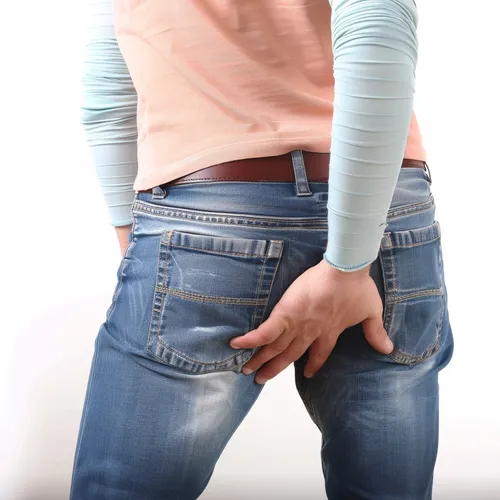Let’s face it, haemorrhoids (or “piles” as some call them) are a real pain in the butt – literally! These swollen veins in the rectum or anus can make you miserable with itching, bleeding, and discomfort. But why do they develop in the first place?
Essentially, haemorrhoids stem from increased pressure in the veins down there. It’s kind of like varicose veins, but in a much more awkward location. And since we humans have the lovely pleasure of walking upright, that constant strain makes it easier for those veins to get engorged and angry.
Some factors up your risk though. If your parents had haemorrhoid issues, you’re more likely to as well – thanks genetics! Pregnancy can cause them by relaxing those crucial veins. And being overweight, straining too hard on the toilet, or having a crappy (no pun intended) diet without enough fibre all make haemorrhoids smile gleefully.
The Most Common Haemorrhoid Symptoms
For some lucky folks, haemorrhoids are totally asymptomatic – they have ’em but don’t even know it. The rest of us, however, get the disappointing joy of symptoms like:
- Bright red blood on the toilet paper or in the bowl (a real wake-up call)
- Itchiness that makes you want to scratch everywhere but there
- A constant anal ache or pain that reminds you of haemorrhoids’ presence
- External haemorrhoids feeling like a lump sticking out (sexy, right?)
Internal haemorrhoids are usually more chill and don’t cause as many issues. But those external ones? They’re drama queens that love making their presence felt.
When to See a Doctor
While haemorrhoids are incredibly common (over half of people have had them by age 50!), rectal bleeding can sometimes indicate something more serious. If over-the-counter treatments don’t provide relief or you’re unsure about your symptoms, it’s wise to have a doc take a look.
Your physician can usually diagnose haemorrhoids via a rectal exam. But if things seem iffy, you may need some further testing like a proctoscopy (a tiny camera up the rear- ouch!) to get to the bottom of it.
Treatment Options for Haemorrhoid Relief
No need to panic – haemorrhoids are annoying but not dangerous when treated properly. If they’re small and not bothering you, maybe just leave ’em be for now.
For minor itchiness and discomfort, over-the-counter creams can provide sweet relief when applied directly (glamorous, we know). Taking warm sitz baths or using cold compresses can also help reduce swelling and irritation.
If fibre is lacking in your diet, your doc will likely recommend upping your intake to keep things soft and movable down under. Making some simple changes like drinking more fluids, exercising regularly, and going to the bathroom as soon as you get the urge (don’t hold it!) can work wonders too.
But when haemorrhoids are persistent pains who just won’t quit, surgical removal may be an option. Don’t worry, it’s usually an outpatient procedure these days. Your doctor will go over all the possibilities to get you feeling better.
Preventing Future Haemorrhoid Misery
Once you’ve gotten haemorrhoid relief, you’ll definitely want to avoid a recurrence of that madness. Taking some basic preventative steps can stop them before they start:
- Listen to your body’s call of nature – don’t delay going to the bathroom
- No straining or pushing excessively (just relax and let it happen naturally)
- Stay hydrated by drinking plenty of fluids daily
- Keep moving with regular exercise to avoid constipation
- Load up on high fibre foods like fruits, veggies, and whole grains
- Limit throne time and don’t linger on the toilet
With some small lifestyle adjustments, you can say bye to those problematic haemorrhoids for good. Your botty will thank you!
Photo “Haemorrhoids: Causes, Symptoms and Remedies” by Anthony Cunningham for Zoom Health
Zoom Health is a leading UK supplier of Home Health Tests and Earplugs





